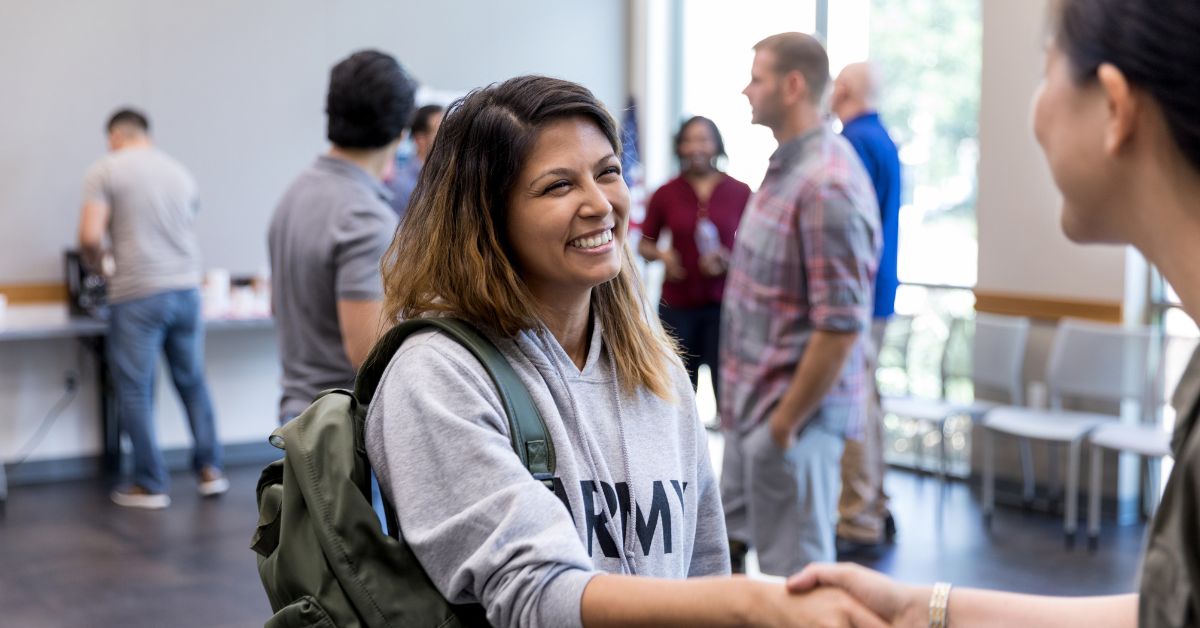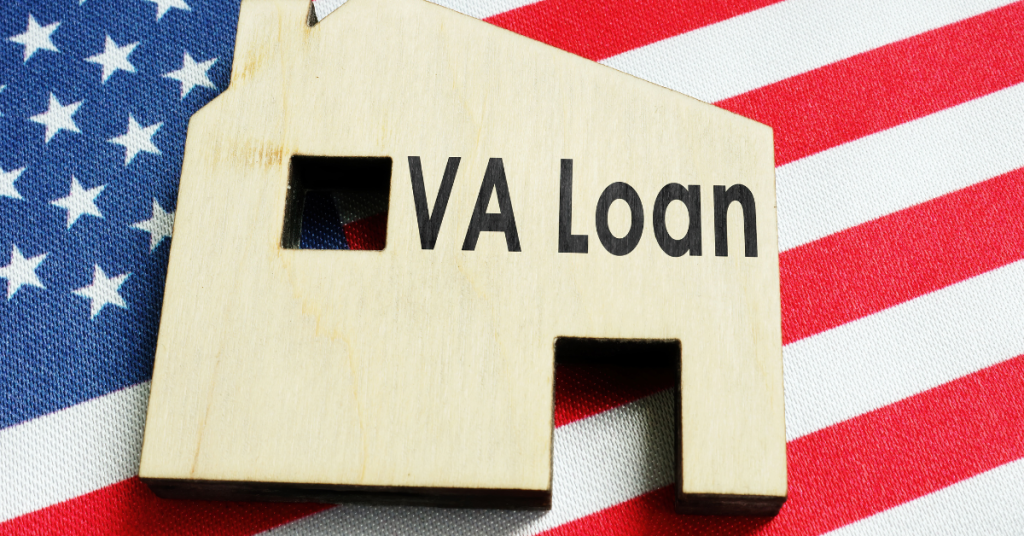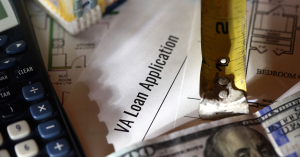In home financing, it’s easy to get lost among the many lending options available to potential homeowners. However, if you’re a military veteran, you could have a unique advantage in the form of VA loans – a benefit bestowed upon you by Uncle Sam himself.
But what if you could unlock an even more intriguing option within this already attractive package? Enter the “VA No-No Loan,” an exceptional choice that offers smoother sailing toward your dream home, especially if you want to limit your out-of-pocket expenses during your home’s closing process.
As a respected authority on home loans, I invite you to fasten your seat belts as we delve into the world of VA options, exploring what they are, their benefits, and how they could turn the home-buying process from a dread-inducing endeavor into a peppy walk in the park.
What is a VA No-No Loan
A VA loan is a mortgage option in the United States, guided and sponsored by the Department of Veterans Affairs (VA). Much lauded for its benefits, the program is designed to offer long-term financing to eligible U.S. veterans or their spouses. When you hear the term “VA No-No,” you may wonder what “No-No” signifies. It may sound like an odd duplication, but this repetition could be the difference between paying thousands upfront or not in lending. The term means lending, where the veteran doesn’t down pay and has no out-of-pocket costs.
Here’s a comparison between VA no and Traditional lending:
| Comparison Aspects | VA No-No | Traditional |
|---|---|---|
| Down Payment | None required | Usually 3.5 – 20% |
| Closing Costs | Paid by the seller | Paid by the buyer |
| PMI | Not required | Usually required |
| Interest Rates | Competitive, often lower | Higher |
| Loan Assumption | Allowed (with conditions) | Not always allowed |
| Refinance Options | Available, often with lower costs | Available, often requires equity |
The VA Loan as a Mortgage Option
It’s important to grasp the mortgage concept and how VA loans fit into this financial quilt. A mortgage is a legal agreement that protects a lender, allowing them to repossess a debtor’s property if they fail to fulfill their repayment obligations.
VA loans, on the other hand, deviate favorably from traditional mortgages with distinct features that are much beloved. Unlike conventional options, VA loans don’t have a PMI and don’t require a down payment.
How to Qualify for a VA No-No Loan

The question of how to qualify for a VA no lending can be best answered by understanding the eligibility requirements. Here are the eligibility criteria for this facility:
- Active duty veterans who have served at least 90 consecutive days during wartime or 181 days during peacetime
- National Guard members or reservists serving for at least six years.
- Surviving spouses of veterans.
Additional requirements for the loan extend to the seller of the house paying all the closing costs and the buyer qualifying for a VA loan even after bankruptcy cases.
Accessing a VA No-No Loan
There’s a step-by-step process to get a VA no-no loan:
- Confirm your VA loan eligibility.
- Apply for a Certificate of Eligibility (COE) to prove that you meet your lender’s military service member requirements. This is provided by the VA.
- Contact a VA-approved lender for guidance throughout the VA loan process.
- Keep in mind the saying “don’t put the cart before the horse.” Before becoming too attached to a specific property, ensure that you qualify for lending.
By following to these steps, you can increase your chances of successfully obtaining a VA No-No Loan and achieving your homeownership goals.
Understanding VA Loan Closing Costs
These costs are the assortment of fees and expenses that you will need to pay at the time of closing when you officially become a homeowner. While VA funding and closing costs are common across all types of loans, some expenses are unique to VA home loans.
Components of Closing Costs
- Loan Origination Fee: The lender charges this fee for processing the new application.
- VA Funding Fee: It’s a mandatory fee intended to reduce the loan’s cost to taxpayers, considering it requires no down payment and has no mortgage insurance.
- Appraisal Fee: The VA requires an appraisal to establish the house’s fair market value.
- Title Insurance: This ensures no issues with the home’s title, protecting you and the lender.
Impact of Closing Costs
The VA No-No loan distinguishes itself from other types by having the seller pay for all closing costs. This arrangement could save the home buyer thousands of dollars upfront, making homeownership a more accessible reality for many veterans.
Seller Concessions
According to VA guidelines, sellers can pay all of a buyer’s lending-related closing costs and up to 4% in concessions, which can cover prepaid expenses, like property taxes and homeowner’s insurance, paying off borrower’s debts, among other things.
Lender Credits
In certain cases, closing costs can be rolled into the total lending amount, so you won’t need to pay them upfront. Always remember to ask what costs you may be expected to pay. The VA no option can save you thousands of dollars at closing, relieving financial stress when purchasing a new home.
Things to Remember About Closing Costs
Remember, all VA loans, including the VA No-No, require an appraisal to assess the property’s market value. It’s important to negotiate who pays these costs during the closing process. It’s possible to roll these charges into your loan amount or have them paid by the home seller. Various factors can impact these costs, including your negotiation skills and market conditions.
The Pay Structure of a VA No-No Loan
The pay structure of a VA no-no lending option needs mentioning for its simplicity. Like other types of mortgages, you need to pay your monthly mortgage amount. What’s attractive is if you find yourself flush with cash, the VA program allows you to pay off your debt early without penalties. Furthermore, the availability of refinance options with this option gives flexibility and security to borrowers.
Pros and Cons of a VA No-No Loan

There are numerous benefits of a VA loan. The table below helps unravel this lending option’s advantages and drawbacks.
| VA No-No Aspects | Pros | Cons |
|---|---|---|
| Down Payment | None required | – |
| Seller Pays Closing Costs | Reduces upfront costs | Dependent on the seller’s agreement |
| PMI | Not required | – |
| Interest Rates | Often lower than conventional options | Dependent on creditworthiness |
| Loan Assumption | Allowed can make it easier to sell the house | Must be approved by the lender |
| Property Type | Includes a variety of property types | Only applicable for primary residences |
With a wealth of experience in VAs, understanding the key features makes the path to homeownership less tricky, and financial surprises can be virtually nonexistent. Despite some limitations, its benefits carry plenty of favor in its direction.
Frequently Asked Questions About VA No-No Loan
What does a VA loan cover?
A VA lending covers the cost of buying, constructing, or improving a home for personal occupancy by eligible individuals and their spouses. It offers favorable borrowing terms like requiring no down payment or mortgage insurance and typically carries lower interest rates compared to conventional options.
What is a no-no from the military?
A “no-no” typically refers to prohibited or unacceptable behavior in military parlance. However, in the context of VA lending, the term “no-no” specifically relates to the scenario where the veteran doesn’t pay any down payment or out-of-pocket closing costs when purchasing a home.
What does it mean to assume a VA loan?
It means to take over the mortgage from the original borrower under the same terms, effectively transferring the lending responsibilities. The lender must approve this transfer, ensuring the new borrower meets the credit and income qualifications.
Why is a VA loan better?
A VA loan is considered better than many other mortgage options due to the combination of benefits it offers to eligible veterans and surviving spouses. These include no down payment requirement, no PMI, lower interest rates, and seller-paid closing costs.






